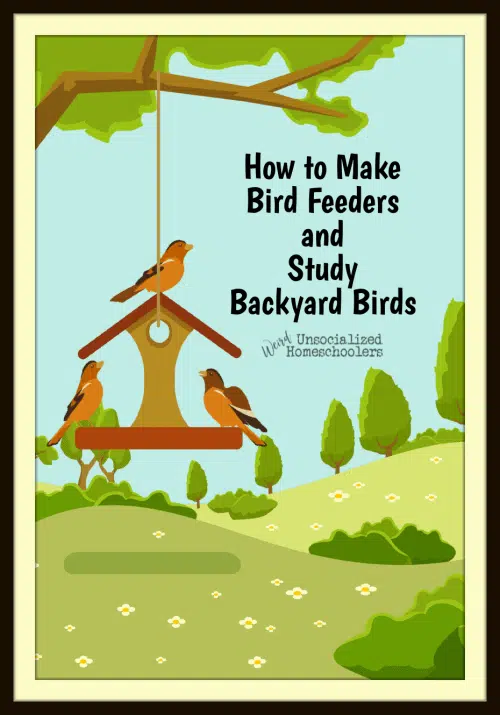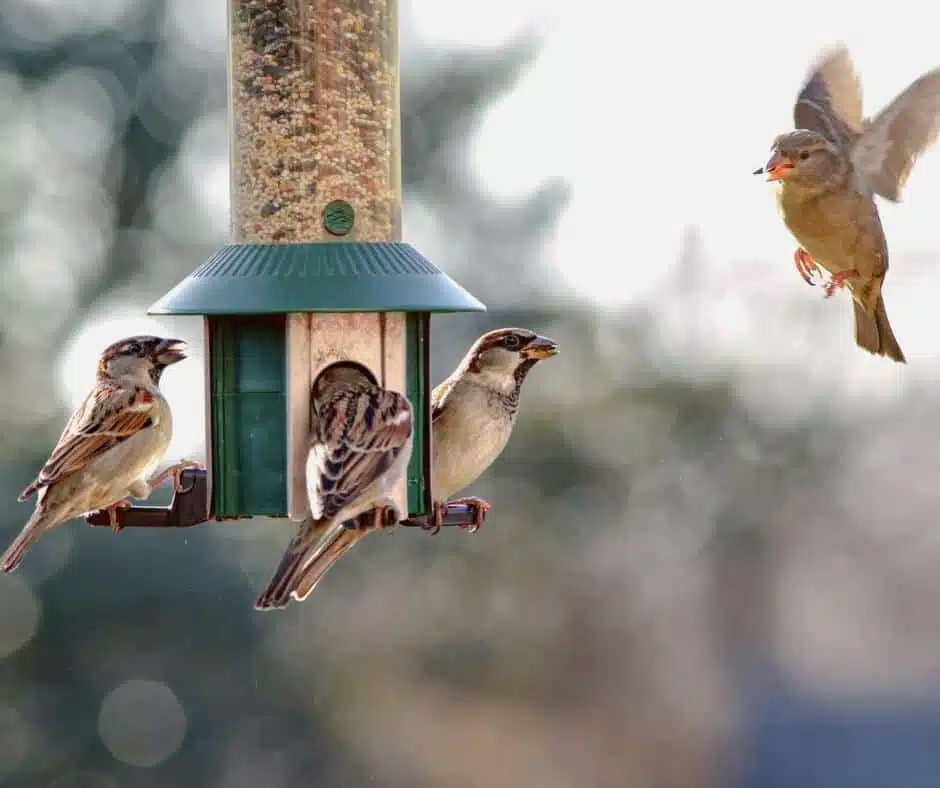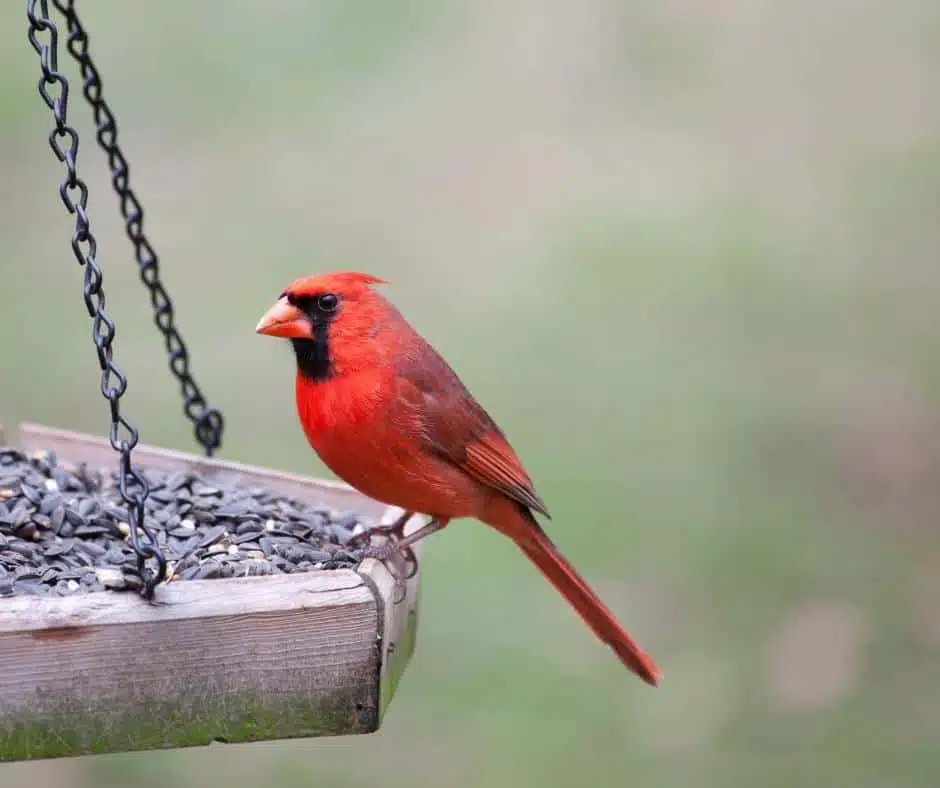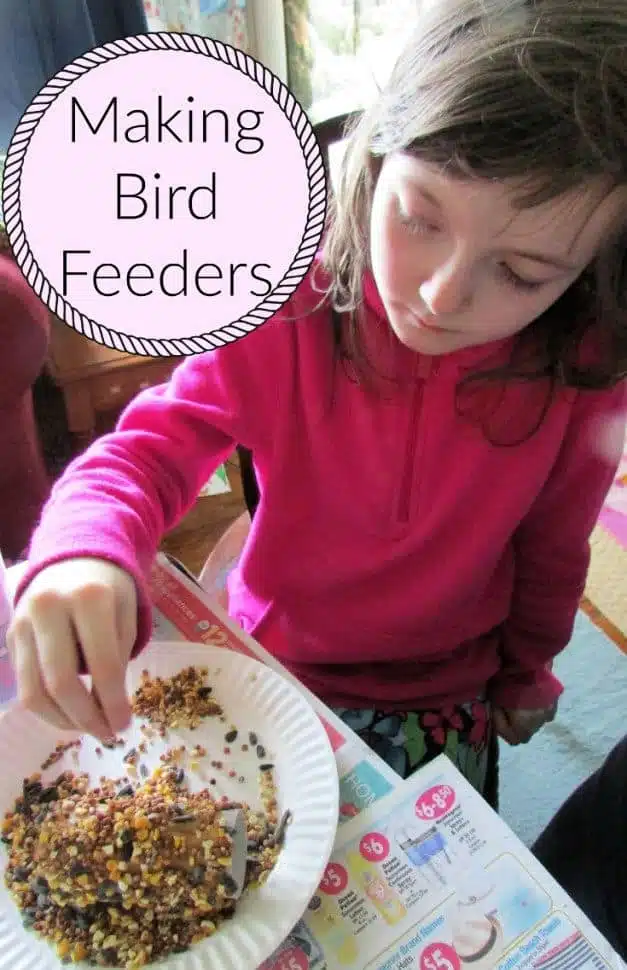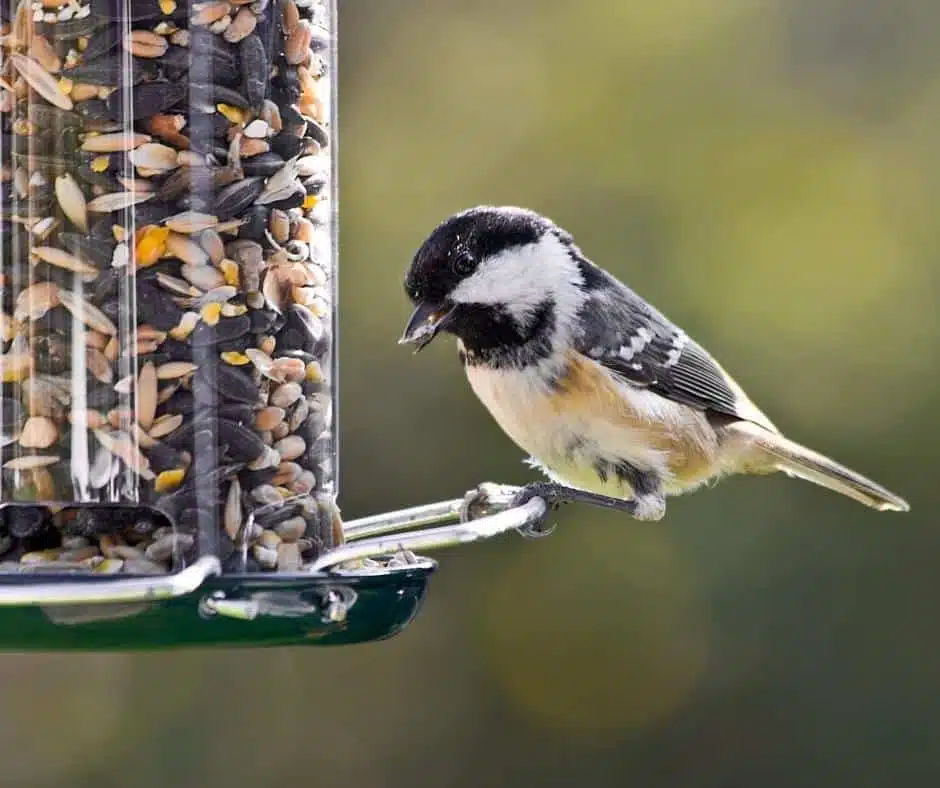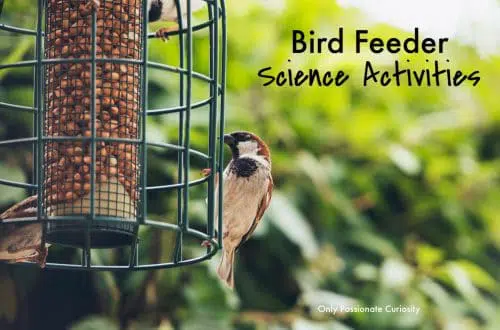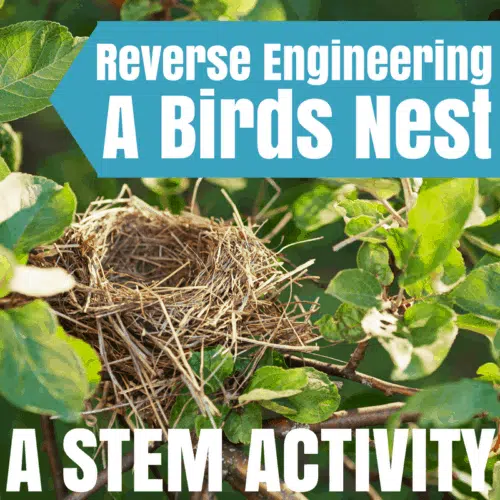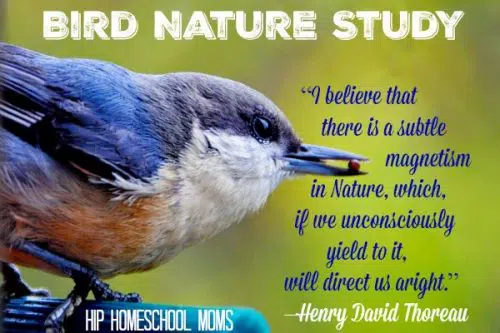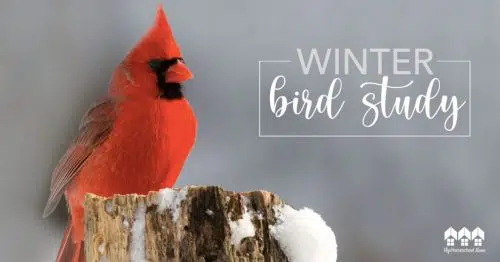How to Make Bird Feeders and Study Backyard Birds
Homeschooling doesn’t have to be expensive or complicated. For instance, you can do a spring nature study in your own backyard with supplies you already have on hand. (Or, if you’re reading this article later in the year, you can do an autumn nature study.) You can create your own nature journal and record your observations right from your home, even if you live in the city. A great way to get started with a nature unit study is to observe backyard birds. You’d be surprised how many birds are all around you, even in an urban or suburban setting!
Written by Sara of Heart and Soul Homeschooling.
Studying Backyard Birds
One of the first things you’ll need to do to study backyard birds is to make sure that they have a source of clean water and food. Even if you don’t have a huge yard or many trees, you can still feed the birds. There are birdfeeders that stick to the window with a suction cup if you don’t have trees. If you do have trees, you may want to make a Mason Jar Bird Feeder.
If you aren’t sure which birds frequent your area, start with an all-purpose birdseed. Sunflower seeds are a favorite of almost every backyard bird, so you may want to use them as well. A variety mix will initially attract birds so you can observe them. Then adjust the type of food as necessary once you learn which birds you have.
Types of Backyard Birds
In the northeast where I live, there are certain birds that are very common to see at the backyard feeders. They include:
- Cardinals
- Blue Jays
- House Sparrows
- Black-capped Chickadees
- Downy Woodpeckers
- Nuthatches
- Tufted Titmice
- Starlings
- Gold Finches
Robins are very common, too, but they aren’t birds that generally eat at feeders. They are ground feeders who prefer worms and bugs. Learning the difference between ground feeders and birds that eat seeds and berries is another great topic to study.
You can learn which birds are common in your region by visiting the birds site at Cornell Lab of Ornithology. They even have live bird cams to watch and online courses you can take if you want to learn even more about birds.
Here is a live bird cam in Ithaca, NY. There is a great variety of birds at this feeder, so it can be a good way to learn to identify them.
Bird Calls and Bird Songs
Learning the difference between a call and a song, as well as identifying birds based on their sounds, is a fun skill to learn. My 11-year-old daughter can identify over 15 different birds in our backyard based simply on their sounds! She plans to become an ornithologist one day. Homeschooling allows us to encourage her interests with delight-directed learning.
Birds and the Climate
You can track the migration of birds so you know which birds will be at the feeder depending on the time of year. You can also see which birds are becoming endangered due to loss of habitat or weather changes. These are fascinating ways to study science topics and the effects of humans on animal habitats. There are many websites with maps and information for migration tracking. You can find migration information and more at the American Bird Conservancy website and at the BirdCast website among others.
Make Your Own Bird Feeders
We always have fun making our own bird feeders. Not only do you get to learn about birds, but you also get to watch them eating from a feeder that you actually made yourself. Kids of all ages love to see the birds visit their homemade feeders!
Supplies are simple and affordable, too. You probably have the basics on hand already — peanut butter, empty toilet paper rolls, popcorn, berries, apples, orange peels, and even sunflower seeds are typical household items you can use.
Making your own bird feeders is a good way to get started bird watching because you don’t have to make a big investment at first. Keeping it simple will help the kids be involved in a hands-on way, which always makes learning more fun!
Not only that, but you can help the environment by using recycled materials to make your bird feeders.
You can download the instructions and ideas for making your own bird feeders here:
Let’s Make a Bird Feeder
Just print the instructions, gather your supplies, and make your own bird feeder today!
There are three types of bird feeders to make in this free printable activity. You probably already have all the materials you need to make at least one or two of them!
- Pinecone
- Toilet paper roll
- Birdseed ornament with gelatin
Birds need a lot of food year-round because their metabolisms are so fast. The colder weather makes finding seeds more difficult for them, and the warmer weather means nesting season when they need more calories to take care of their young. That means that anytime is a good time to feed the birds!
Additional Recommended Resources
We’ve been studying our backyard birds on a regular basis for four years now. Here are some of our favorite resources for learning more about them:
Beautiful Birds NaturExplorers nature study guide
Birds, Nests, and Eggs Take-Along Guide by Mel Boring
These articles share even more ideas and information to add to your bird studies!
Bird Feeder Science Activities
Reverse Engineering a Bird’s Nest: A STEM Activity
Sara Jordan is a homeschooling mom of three creative girls. They believe in literature-rich learning with living books. Relaxed, delight-directed learning is their approach so they follow interests and explore ideas to encourage a lifelong love of learning. Their emphasis is on nurturing creativity, curiosity, character, and connection. Sara is an author/speaker/consultant who loves to inspire other homeschool moms on her blog, Heart and Soul Homeschooling, and with the resources she creates in the Heart and Soul Homeschooling shop. You can find her on Pinterest, Facebook, and Twitter.



